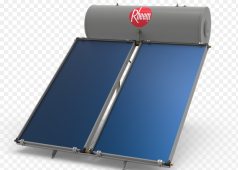I see I'm late to this party. My houses original heating design depended on a solar thermal/bio thermal system. Sadly the recent epa changes made the manufacturer stop importing - walltherm was the company.
In addition to that the sheer cost of a solar thermal system vs pv and a heat pump dhwt make choice a no brainer. The rheem HP phpro uses 500w of power to heat water in heat pump only mode. The load of the hp is easily handled by 2 extra PV panels on an array.
Simply put in my experience, wires are easier and cheaper to run than piping, coolant, pumps, indirect storage tanks and specialty controllers.
In addition to that the sheer cost of a solar thermal system vs pv and a heat pump dhwt make choice a no brainer. The rheem HP phpro uses 500w of power to heat water in heat pump only mode. The load of the hp is easily handled by 2 extra PV panels on an array.
Simply put in my experience, wires are easier and cheaper to run than piping, coolant, pumps, indirect storage tanks and specialty controllers.



:max_bytes(150000):strip_icc()/IRR_final-9761b2cb70aa42eca108db9f04d3e8c5.png)
